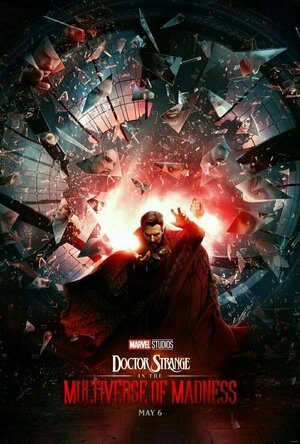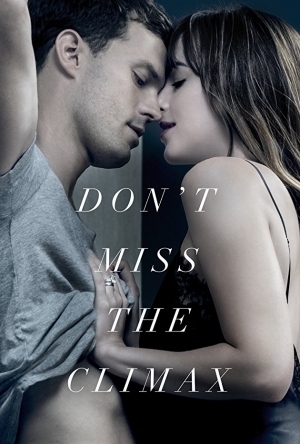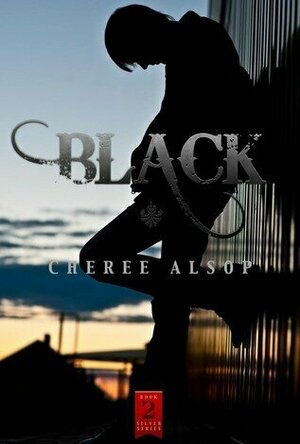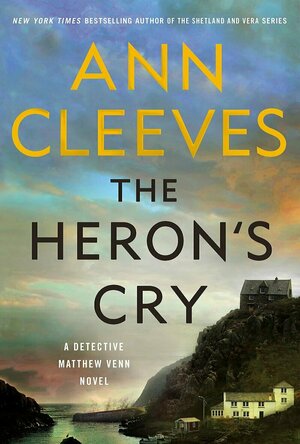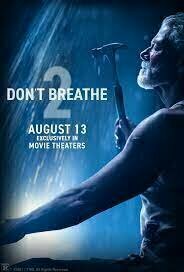Search
Search results
BankofMarquis (1832 KP) rated Doctor Strange in the Multiverse of Madness (2022) in Movies
May 9, 2022
Fun...with heart
Doctor Strange is my favorite Marvel character. This comes from my college days when one of my roommates had a stack of Dr. Strange comics and I tore through them - one of the few Marvel comics that I have actually read. So I was thrilled to find out that Sam Raimi was coming back (was he ever gone?) to direct the 2nd solo Dr. Strange film, DOCTOR STRANGE IN THE MULTIVERSE OF MADNESS.
And it does not disappoint for while DOCTOR STRANGE IN THE MULTIVERSE OF MADNESS is not quite as “mad” as one would expect by the build up to this film, it delivers solid action by actors playing characters that are easy to root for (or root against) all done with a wink in the eye and a focus on Marvel’s secret weapon…relationships and heart.
You will find no brooding “dark knights” in this one.
Sprightly Directed by Sam Raimi (THE EVIL DEAD), Multiverse (as I will call it from here on out) finds our titular hero (Benedict Cumberbatch) connecting with - and working to save - a multiverse hopping heroine in the form of America Chavez (Xochitl Gomez) from an evil that wishes to drain her of her multiverse hopping powers.
What happens next is a multiverse hopping action/adventure/horror/chase film that really shows off the cinematic sensibilities of Director Raimi who’s mark is all over this film…for the better. Multiverse swerves really close to being a horror film, but, fortunately for it’s box office fortunes, remains firmly in the action/adventure/superhero genre. Only a director like Raimi can ride this fine line as well as he has and it works for this film.
Cumberbatch, of course, is terrific as Doctor Stephen Strange and he slides, comfortably, back into the cloak and sling-ring. Benedict Wong (Wong - The Sorcerer Supreme), Rachel McAdams (Dr. Christine Palmer) and Chiwetel Ejiofor (Baron Mordo) all reprise their characters from the first film and they all seem re-energized in their roles for this one while Xochitl Gomez makes a winning debut as America Chavez.
But, make no mistake, the personae that steals this film is Elizabeth Olson as the grieving Wanda Maximoff/Scarlett Witch who Dr. Strange reaches out to when America Chavez falls into his lap. She is outstanding and is really the driving force here. It would not be a misnomer to say that this film easily could have been titled THE SCARLET WITCH IN THE MULTIVERSE OF MADNESS.
My one quibble with this film is that it doesn’t go to enough Multiverses to suit my tastes and is not quite as “mad” as one would hope - our hero does spend a rather large amount of time in one multiverse - but that is a minor issue and this one multiverse does bring many fun cameos…cameos that will not be spoiled here.
Which brings up one last point. See this film, if you can, in a theater full of the aforementioned fanboys. The full house IMAX theater that I caught this film in went absolutely nuts when one specific person showed his/her face for their extended cameo and that was a very fun time.
As is DOCTOR STRANGE IN THE MULTIVERSE OF MADNESS - it works well as a stand alone film, but if you want to do “some homework”, check out the Disney+ TV Series WANDAVISION (essential), the first DOCTOR STRANGE movie (good background) and the animated Disney+ series MARVEL’S WHAT IF (some nice callbacks).
And, of course, stay for the end credits…it sets up DOCTOR STRANGE 3, a film that can’t get here soon enough.
Letter Grade: A-
8 stars (out of 10) and you can take that to the Bank(ofMarquis)
And it does not disappoint for while DOCTOR STRANGE IN THE MULTIVERSE OF MADNESS is not quite as “mad” as one would expect by the build up to this film, it delivers solid action by actors playing characters that are easy to root for (or root against) all done with a wink in the eye and a focus on Marvel’s secret weapon…relationships and heart.
You will find no brooding “dark knights” in this one.
Sprightly Directed by Sam Raimi (THE EVIL DEAD), Multiverse (as I will call it from here on out) finds our titular hero (Benedict Cumberbatch) connecting with - and working to save - a multiverse hopping heroine in the form of America Chavez (Xochitl Gomez) from an evil that wishes to drain her of her multiverse hopping powers.
What happens next is a multiverse hopping action/adventure/horror/chase film that really shows off the cinematic sensibilities of Director Raimi who’s mark is all over this film…for the better. Multiverse swerves really close to being a horror film, but, fortunately for it’s box office fortunes, remains firmly in the action/adventure/superhero genre. Only a director like Raimi can ride this fine line as well as he has and it works for this film.
Cumberbatch, of course, is terrific as Doctor Stephen Strange and he slides, comfortably, back into the cloak and sling-ring. Benedict Wong (Wong - The Sorcerer Supreme), Rachel McAdams (Dr. Christine Palmer) and Chiwetel Ejiofor (Baron Mordo) all reprise their characters from the first film and they all seem re-energized in their roles for this one while Xochitl Gomez makes a winning debut as America Chavez.
But, make no mistake, the personae that steals this film is Elizabeth Olson as the grieving Wanda Maximoff/Scarlett Witch who Dr. Strange reaches out to when America Chavez falls into his lap. She is outstanding and is really the driving force here. It would not be a misnomer to say that this film easily could have been titled THE SCARLET WITCH IN THE MULTIVERSE OF MADNESS.
My one quibble with this film is that it doesn’t go to enough Multiverses to suit my tastes and is not quite as “mad” as one would hope - our hero does spend a rather large amount of time in one multiverse - but that is a minor issue and this one multiverse does bring many fun cameos…cameos that will not be spoiled here.
Which brings up one last point. See this film, if you can, in a theater full of the aforementioned fanboys. The full house IMAX theater that I caught this film in went absolutely nuts when one specific person showed his/her face for their extended cameo and that was a very fun time.
As is DOCTOR STRANGE IN THE MULTIVERSE OF MADNESS - it works well as a stand alone film, but if you want to do “some homework”, check out the Disney+ TV Series WANDAVISION (essential), the first DOCTOR STRANGE movie (good background) and the animated Disney+ series MARVEL’S WHAT IF (some nice callbacks).
And, of course, stay for the end credits…it sets up DOCTOR STRANGE 3, a film that can’t get here soon enough.
Letter Grade: A-
8 stars (out of 10) and you can take that to the Bank(ofMarquis)
Veronica Pena (690 KP) rated Fifty Shades Freed (2018) in Movies
Jan 15, 2020
I think this may be a first for me - I think I liked the movie more than I liked the book. *GASP* I know. I am usually the last person to say that. There are several movie adaptations of books that I hate because they just miss the mark. This isn't one. If you've read my review of the book, then you know that there's a whole section of the book that I think is useless involving Ana's stepdad, Ray. (No spoilers, but it's useless. Literally adds nothing to the story.) I'm so happy that they didn't end up putting that in the film. It would've added probably 30 minutes of dead footage that wouldn't have advanced the plot in any way.
In terms of the acting and the dialogue, as well as the plot, I think this is the best of all three of them. Not only is it the climax of the plot between the three films, but I also think that it showcases Dakota Johnson and Jamie Dornan far better than any of the other films. Jamie has even said that Christian is hard to like in the first film and he is, I think Ana is too. But to see the story unfold, round out, and finish, it's incredibly satisfying. Of course, there are things that they had in the book that they didn't have in the movie - I would've loved the full epilogue to be shot - but overall, I think that this movie is the one that comes out on top, along with the novel. Definitely a guilty pleasure and I'm sure I'll find myself watching it every couple of months just for a good time.
In terms of the acting and the dialogue, as well as the plot, I think this is the best of all three of them. Not only is it the climax of the plot between the three films, but I also think that it showcases Dakota Johnson and Jamie Dornan far better than any of the other films. Jamie has even said that Christian is hard to like in the first film and he is, I think Ana is too. But to see the story unfold, round out, and finish, it's incredibly satisfying. Of course, there are things that they had in the book that they didn't have in the movie - I would've loved the full epilogue to be shot - but overall, I think that this movie is the one that comes out on top, along with the novel. Definitely a guilty pleasure and I'm sure I'll find myself watching it every couple of months just for a good time.
Merissa (13614 KP) rated Black (The Silver #2) in Books
Feb 17, 2020
Black is the second book in the Silver series and this time the focus is on Jet. He was stolen from his family at a very young age and given to the Woman, who only wanted him for deathmatches. There was no love, care, or attention in Jet's life from that moment. All that changes when Jaze rescues him and takes him in. It doesn't all suddenly become sunshine and roses though and THAT is what made this book so good!
Jet has issues, he really does, and let's face it, you would do too if you'd gone through what he did. He proves he is intelligent by teaching himself English, Spanish, and lip-reading. He shows compassion by not killing someone until he realises that it just doesn't work that way and understands the pact made by the other wolves. My heart broke for him in so many ways and yet I was proud of him too. He didn't stop trying and would do anything to protect those he called his own.
This was incredibly written and I read it in one sitting. I was literally unable to stop reading until I knew all was good in Jet's world. The world-building just gets better as it becomes clearer with each book. The characters grow and change, becoming 'more'. I loved hearing about Jaze and Nikki and I hope we continue hearing about past couples as the series progresses.
A darker fantastic young adult paranormal that I absolutely recommend! The only thing I don't know is what happened to Shadow's Curse. I'm presuming he's dead but I really wish he wasn't!
* A copy of this book was provided to me with no requirements for a review. I voluntarily read this book, and the comments here are my honest opinion. *
Merissa
Archaeolibrarian - I Dig Good Books!
Jet has issues, he really does, and let's face it, you would do too if you'd gone through what he did. He proves he is intelligent by teaching himself English, Spanish, and lip-reading. He shows compassion by not killing someone until he realises that it just doesn't work that way and understands the pact made by the other wolves. My heart broke for him in so many ways and yet I was proud of him too. He didn't stop trying and would do anything to protect those he called his own.
This was incredibly written and I read it in one sitting. I was literally unable to stop reading until I knew all was good in Jet's world. The world-building just gets better as it becomes clearer with each book. The characters grow and change, becoming 'more'. I loved hearing about Jaze and Nikki and I hope we continue hearing about past couples as the series progresses.
A darker fantastic young adult paranormal that I absolutely recommend! The only thing I don't know is what happened to Shadow's Curse. I'm presuming he's dead but I really wish he wasn't!
* A copy of this book was provided to me with no requirements for a review. I voluntarily read this book, and the comments here are my honest opinion. *
Merissa
Archaeolibrarian - I Dig Good Books!
Blood Sisters: The Next Addictive Thriller from the Bestselling Author of My Husband's Wife
Book
THREE LITTLE GIRLS SET OFF TO SCHOOL ONE SUNNY MORNING. WITHIN AN HOUR, ONE OF THEM IS DEAD. 'So...
contemporary mystery psychological thriller
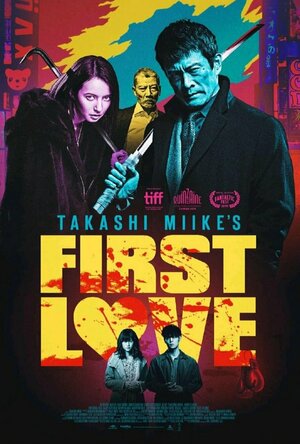
First Love (2019)
Movie Watch
First Love (2019) Toronto International Film Festival Never mind a New York minute: it's in a...
Miike First love Japanese
Kristy H (1252 KP) rated The Heron's Cry in Books
Sep 16, 2021
An excellent, complex character-driven mystery
Detective Matthew Venn is called out to a farm/artist retreat where Dr. Nigel Yeo has been killed. He's found dead in his own daughter's glassblower studio, stabbed with a shard of one of her vases. Dr. Yeo seems like a nice man: adored by his daughter and a public servant, working to help bring understanding between the public trusts. When a second body is found--killed in a similar way--Matthew realizes that he must dig deep into the secrets and lies of his community to find a killer.
I adore this series and the fact that Detective Matthew Venn, our lead, is a gay man. As with all of Cleeves' books, this is an excellent, solid mystery, with an interesting plot and a team whom you can easily become invested in. Each of her characters is well-written, strong, and original. It's so refreshing, honestly, to read a tale without a crazy unreliable narrator but instead one that simply relies on a strong story and excellent characters. There is a slate of people who could be potential suspects, and we also get backstories for our various detectives: Matthew, Ross, and Jen. Everyone is entwined in this small town (and honestly, if I were them, I'd be a bit worried how many people seem to die there! Cabot Cove, anyone?).
This book kept me guessing the entire time, which I love. I was constantly second guessing myself and wondering who killed whom. It was filled with twists, but nothing wild or unbelievable. This is easily becoming one of my new favorite series. 4+ stars.
I received a copy of this book from St. Martin's Press / Minotaur Books and Netgalley in return for an unbiased review.
I adore this series and the fact that Detective Matthew Venn, our lead, is a gay man. As with all of Cleeves' books, this is an excellent, solid mystery, with an interesting plot and a team whom you can easily become invested in. Each of her characters is well-written, strong, and original. It's so refreshing, honestly, to read a tale without a crazy unreliable narrator but instead one that simply relies on a strong story and excellent characters. There is a slate of people who could be potential suspects, and we also get backstories for our various detectives: Matthew, Ross, and Jen. Everyone is entwined in this small town (and honestly, if I were them, I'd be a bit worried how many people seem to die there! Cabot Cove, anyone?).
This book kept me guessing the entire time, which I love. I was constantly second guessing myself and wondering who killed whom. It was filled with twists, but nothing wild or unbelievable. This is easily becoming one of my new favorite series. 4+ stars.
I received a copy of this book from St. Martin's Press / Minotaur Books and Netgalley in return for an unbiased review.
Kristy H (1252 KP) rated The Newcomer in Books
May 6, 2021
A fairly cute but rather unbelievable romance/mystery
When Letty Carnahan finds her sister Tanya dead, she knows she has to flee. Tanya warned her about this--if anything happened to her, Letty was to take Tanya's four-year-old daughter, Maya, and run. Letty has no idea where to go, but Tanya's left behind one clue: a magazine article with a motel circled. She and Maya arrive at the Murmuring Surf, a little motel in Florida, exhausted. Letty is convinced that Tanya's ex--Maya's father--a rich businessman is after them. But at "the Surf," the owner, Ava DeCurtis, takes a liking to Maya (and Letty). Despite the No Vacancy sign, she lets Letty and Maya stay in a tiny efficiency. But the rest of the hotel regulars regard Letty and Maya--the newcomers--with suspicion, as does Ava's son, local cop Joe DeCurtis. Joe is pretty convinced Letty is a fugitive and maybe even a murderer. As Letty tries to settle in and heal with Maya, she attempts to unravel exactly what happened to Tanya: and the more she finds out, the more it leads back to the Surf.
"Nobody could be trusted. Not after everything that had happened."
This is a cute, serviceable mystery-romance combo, albeit a slightly preposterous and unbelievable one. Letty flees Tanya's murder scene successfully, a wanted criminal, recognized by no one except Joe, an upstanding, rule-abiding cop who doesn't turn her in. And when the FBI enters the tale, their actions seem highly unreasonable, but... I guess we are supposed to believe anything in the name of love?
As for this love, it's complete insta-love and honestly, at times, a little cringe-worthy. Joe falls for Letty basically on sight and is rather pushy in trying to convince her to be in a relationship. (Hey this is crazy, we just met, I'm not turning you in, let's move in together... umm ok?) It was all a bit much.
Now, the old folks staying at the motel were a total trip. I could completely buy their crazy. And I loved Ava, who was a sweet, overly-trusting, but tough and brave mom, who just wanted to take care of everyone. (I didn't believe that Maya, who had endured great trauma, just sweetly sat and colored for hours each day while Letty worked--I'd like to meet that four-year-old!) The motel setting was spot on, and I desperately wanted to be at the beach while reading the entire book.
Overall, this one held my attention and I couldn't help but root for Letty (and Maya), but it probably won't stick with me. Joe often rubbed me the wrong way and some of the plot points had me rolling my eyes. Still, a cute summery read. 3 stars.
"Nobody could be trusted. Not after everything that had happened."
This is a cute, serviceable mystery-romance combo, albeit a slightly preposterous and unbelievable one. Letty flees Tanya's murder scene successfully, a wanted criminal, recognized by no one except Joe, an upstanding, rule-abiding cop who doesn't turn her in. And when the FBI enters the tale, their actions seem highly unreasonable, but... I guess we are supposed to believe anything in the name of love?
As for this love, it's complete insta-love and honestly, at times, a little cringe-worthy. Joe falls for Letty basically on sight and is rather pushy in trying to convince her to be in a relationship. (Hey this is crazy, we just met, I'm not turning you in, let's move in together... umm ok?) It was all a bit much.
Now, the old folks staying at the motel were a total trip. I could completely buy their crazy. And I loved Ava, who was a sweet, overly-trusting, but tough and brave mom, who just wanted to take care of everyone. (I didn't believe that Maya, who had endured great trauma, just sweetly sat and colored for hours each day while Letty worked--I'd like to meet that four-year-old!) The motel setting was spot on, and I desperately wanted to be at the beach while reading the entire book.
Overall, this one held my attention and I couldn't help but root for Letty (and Maya), but it probably won't stick with me. Joe often rubbed me the wrong way and some of the plot points had me rolling my eyes. Still, a cute summery read. 3 stars.

The Photographer's Ephemeris
Photo & Video and Navigation
App
"Head and shoulders above the crowd is The Photographer’s Ephemeris. Odd name, great app." -...
Gareth von Kallenbach (980 KP) rated Ted (2012) in Movies
Aug 7, 2019
Full disclosure: I am a huge Family Guy fan. I’ve been watching since day one, and even own every volume and special edition DVD released. Okay, now that we have that out of the way.
Ted is the multi-talented Seth MacFarlane’s directorial debut for a feature films. It follows the story of John Bennett (Mark Wahlberg), who as a kid never really had any friends. For Christmas he received a talking teddy bear, which he decided to name Ted. One day he makes a wish that will forever change his life, a wish that Ted could really talk to him and be best friends. That wish came true.
Ted became a world-wide sensation. He was not a figment of John’s imagination, but rather a real-life talking teddy bear. Ted (who is voiced by MacFarlane) becomes the overnight celebrity that we have seen so many times, and eventually becomes old news when fame becomes fleeting.
Flash forward 28 years to present day, John is now 35, but still acts very much the child.
He is in a dead end job, and would rather blow the important things off in his life to hang with his best friend Ted.
This includes is Lori (Mila Kunis), his girlfriend of four years. I think we see where this going, typical relationship problems and the movie then becomes about trying to win Lori back with the help of Ted.
While the story line is a little predictable, it never felt that way while watching it. There is a lot of subtle humor, and there is a lot of in your face rude, crude humor. There were also a lot of cameos. Some will only be obvious to Family Guy fans or fans of the eighties, while others will be right in your face.
One thing that grinds my gears is when some movies these day show the funniest moments in the trailer, and the rest of the movie is… eh.
One thing is for sure: it keeps you laughing almost the whole way through. There were even some lines that I missed because of how loud the laughter in the theater was (which means a repeat trip, I think).
There were a lot of one-liners, though, that I will probably end up using on a regular basis.
I kind of always get nervous about bringing someone to a movie I want to see, afraid that they won’t like my choice. My guest came in with very low expectations of the film, but she ended up laughing the entire time, and even got really caught up in the tense moments.
With all of the drug and sex references, and crude humor, this movie is definitely not meant for a younger audience, or probably even the really easily offended. Keep that in mind and if you still want to watch, you will not be disappointed.
Ted is the multi-talented Seth MacFarlane’s directorial debut for a feature films. It follows the story of John Bennett (Mark Wahlberg), who as a kid never really had any friends. For Christmas he received a talking teddy bear, which he decided to name Ted. One day he makes a wish that will forever change his life, a wish that Ted could really talk to him and be best friends. That wish came true.
Ted became a world-wide sensation. He was not a figment of John’s imagination, but rather a real-life talking teddy bear. Ted (who is voiced by MacFarlane) becomes the overnight celebrity that we have seen so many times, and eventually becomes old news when fame becomes fleeting.
Flash forward 28 years to present day, John is now 35, but still acts very much the child.
He is in a dead end job, and would rather blow the important things off in his life to hang with his best friend Ted.
This includes is Lori (Mila Kunis), his girlfriend of four years. I think we see where this going, typical relationship problems and the movie then becomes about trying to win Lori back with the help of Ted.
While the story line is a little predictable, it never felt that way while watching it. There is a lot of subtle humor, and there is a lot of in your face rude, crude humor. There were also a lot of cameos. Some will only be obvious to Family Guy fans or fans of the eighties, while others will be right in your face.
One thing that grinds my gears is when some movies these day show the funniest moments in the trailer, and the rest of the movie is… eh.
One thing is for sure: it keeps you laughing almost the whole way through. There were even some lines that I missed because of how loud the laughter in the theater was (which means a repeat trip, I think).
There were a lot of one-liners, though, that I will probably end up using on a regular basis.
I kind of always get nervous about bringing someone to a movie I want to see, afraid that they won’t like my choice. My guest came in with very low expectations of the film, but she ended up laughing the entire time, and even got really caught up in the tense moments.
With all of the drug and sex references, and crude humor, this movie is definitely not meant for a younger audience, or probably even the really easily offended. Keep that in mind and if you still want to watch, you will not be disappointed.
Bob Mann (459 KP) rated Don't Breathe 2 (2021) in Movies
Aug 18, 2021
Nicely paced direction and non stop (bloody) action (1 more)
Madelyn Grace delivers a nice and professional performance
Not very original (1 more)
Should we be rooting for Norman at all?
That kid’ll need counselling for life!
I mean. If there was ever an opportunity to come up with a clever title for a sequel, this was it right? "Breathe Again"; "Hold it for a bit longer"; "Are You Turning Blue Yet?". But no... we just get a boring old "2" at the end!
Positives:
- Five years is an awfully long time to wait for a sequel! I have to admit I needed to read through my original review for "Don't Breathe" and the synopsis on IMDB before I went to see this. But, given that it is a fairly standard schlock-horror home-invasion movie, this is a nicely pieced together movie. Debut director Sayagues, who co-wrote the first film with original director Fede Alverez, moves the action along at a non-stop pace leaving you quite exhausted by the end of the (pleasantly short) 98 minutes.
- Stephen Lang nicely retreads his monster from the first movie as a besotted but anxious parent. But particularly good I thought was Madelyn Grace who plays the 11 year old Phoenix. I never once thought "there's a child actress doing a performance". Great job!
Negatives:
- It doesn't get many brownie points for originality: the blindness dice was already rolled in the original. So here we get some re-tread scenes of "the blind man being king", with red insecticide spray replacing the darkness.
- It never feels quite right that you are supposed to be cheering on Nordstrom: someone with virtually no redeeming features (other than a love for dogs).
- The original film had a decidedly icky moment with the whole baster thing. Here we have an equally icky, if ridiculous, plot-twist, taking us into a very dark place indeed. But what is supposed to be a shock-horror moment actually had me in fits of laughter, since all I could think of was a particular scene in "Monty Python and the Meaning of Life"!
Summary Thoughts on "Don't Breathe 2": We've been here so many times before that it's almost a (bloody) paint by numbers. But I have to admit that I thought this one was well done, and a cut above the norm. The first movie made $158M on a budget of just $10M. This one has a (restrained) $15M budget, and has already made that back. Good for them. The gore factor makes it not one for the illustrious Mrs Movie Man (who wisely didn't come). But for horror fans out for a nice gory little romp, this has its attractions.
And by the way, there is a 'monkey' (post-credit scene in One Mann's Movies speak) in this one. Well, Alvarez and Sayagues aren't going to dead-end their options for a "Don't Breathe 3" are they?
(For the full graphical review, please check out onemannsmovies on the web, Facebook and Tiktok. Thanks.)
Positives:
- Five years is an awfully long time to wait for a sequel! I have to admit I needed to read through my original review for "Don't Breathe" and the synopsis on IMDB before I went to see this. But, given that it is a fairly standard schlock-horror home-invasion movie, this is a nicely pieced together movie. Debut director Sayagues, who co-wrote the first film with original director Fede Alverez, moves the action along at a non-stop pace leaving you quite exhausted by the end of the (pleasantly short) 98 minutes.
- Stephen Lang nicely retreads his monster from the first movie as a besotted but anxious parent. But particularly good I thought was Madelyn Grace who plays the 11 year old Phoenix. I never once thought "there's a child actress doing a performance". Great job!
Negatives:
- It doesn't get many brownie points for originality: the blindness dice was already rolled in the original. So here we get some re-tread scenes of "the blind man being king", with red insecticide spray replacing the darkness.
- It never feels quite right that you are supposed to be cheering on Nordstrom: someone with virtually no redeeming features (other than a love for dogs).
- The original film had a decidedly icky moment with the whole baster thing. Here we have an equally icky, if ridiculous, plot-twist, taking us into a very dark place indeed. But what is supposed to be a shock-horror moment actually had me in fits of laughter, since all I could think of was a particular scene in "Monty Python and the Meaning of Life"!
Summary Thoughts on "Don't Breathe 2": We've been here so many times before that it's almost a (bloody) paint by numbers. But I have to admit that I thought this one was well done, and a cut above the norm. The first movie made $158M on a budget of just $10M. This one has a (restrained) $15M budget, and has already made that back. Good for them. The gore factor makes it not one for the illustrious Mrs Movie Man (who wisely didn't come). But for horror fans out for a nice gory little romp, this has its attractions.
And by the way, there is a 'monkey' (post-credit scene in One Mann's Movies speak) in this one. Well, Alvarez and Sayagues aren't going to dead-end their options for a "Don't Breathe 3" are they?
(For the full graphical review, please check out onemannsmovies on the web, Facebook and Tiktok. Thanks.)
